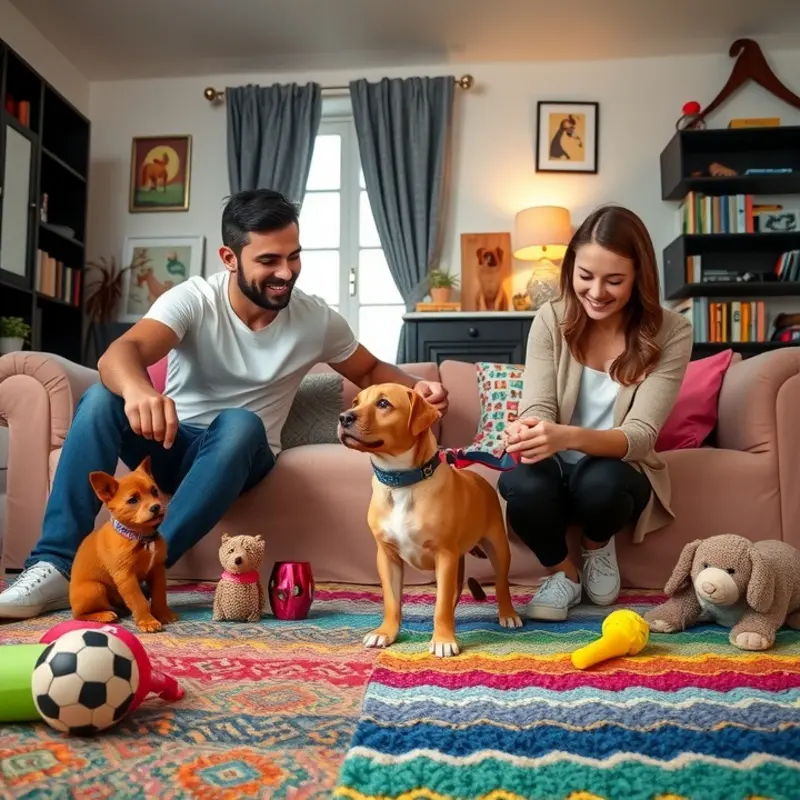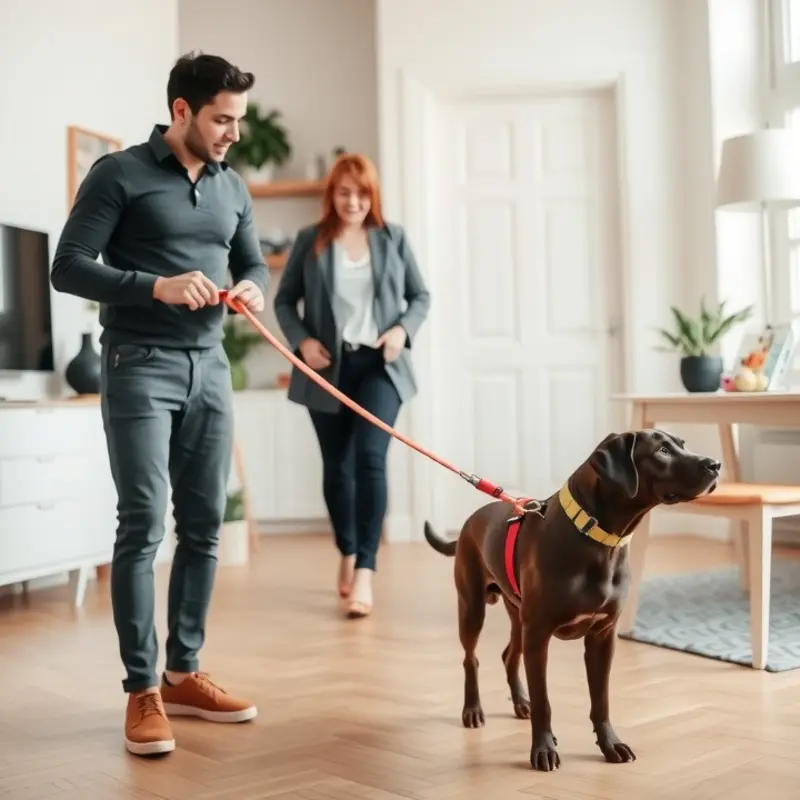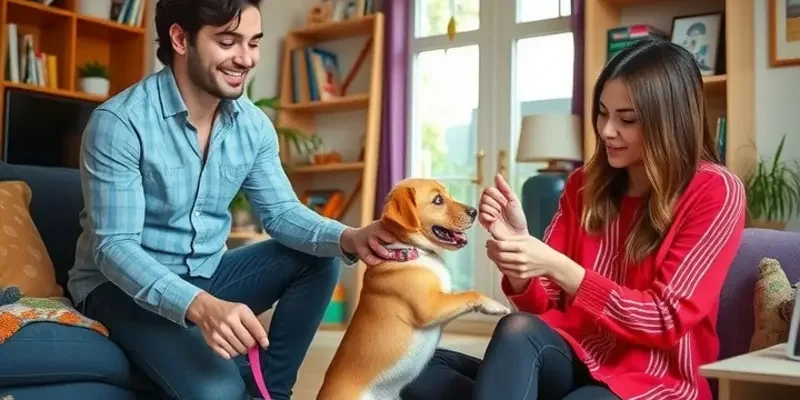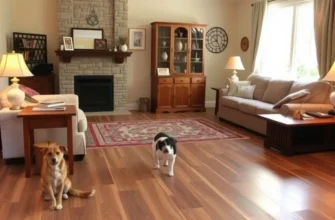Living in an apartment brings its unique joys and challenges, especially when it comes to pet ownership. Families, couples, and renters alike want to create a harmonious living space that accommodates both pets and children. One of the most effective ways to ensure your pet behaves well is through proper leash training. Not only does this help in keeping your furry friend safe and controlled, but it also fosters a peaceful atmosphere for everyone in your household. Leash training instills good manners in your pets, making walks enjoyable and stress-free. As you embrace apartment life, understanding the significance of leash training can enhance your daily routines, ensuring that everyone feels comfortable and at ease. In the following chapters, we’ll explore step-by-step methods for leash training in an apartment setting, along with practical tips to ensure that your pet—and your home—remain welcoming spaces for all.
Building a Strong Foundation for Leash Training

Leash training begins well before you ever clip a leash to your pet’s collar. Preparing your pet is crucial to ensure a successful leash training experience, especially within the constraints of apartment living.
Start by selecting the appropriate leash and collar suited to your pet’s needs. Opt for a lightweight, comfortable collar that allows your pet to move freely. A standard flat leash is generally suitable for most dogs, offering the handler good control while letting the pet explore within set boundaries. Avoid retractable leashes as they may provide inconsistent feedback to the pet during training sessions.
Begin indoors by helping your pet get familiar with wearing a collar and leash in a safe, controlled environment. Allow them to roam freely with the collar on, and casually attach the leash for brief periods. This approach helps associate the leash with relaxed, positive experiences. You might even engage your pet in activities and games they enjoy while wearing their new gear.
Understanding your pet’s personality is key to tailoring the training process. Energetic pets may require shorter, more frequent sessions with extensive play breaks, while more laid-back pets might benefit from longer, consistent training. Consider their mood and energy levels; a wired or tired pet is less likely to respond well.
Incorporate positive reinforcement strategies to encourage desirable behaviors. Reward your pet with treats or praise when they accept the collar and leash calmly. Leverage their favorite rewards to motivate and reinforce what you teach. Ensure that your training sessions remain consistent and regular, establishing a routine where your pet knows what to expect.
Patience is vital in this process. Pets, like people, learn at their own pace. Consistency in commands and rewards will gradually yield results. Avoid harsh corrections or displaying frustration; these can create negative associations and slow learning.
To facilitate productive training sessions, engage your pet in exercises that promote focus and responsiveness. For example, practice short leash walks within the apartment, rewarding attention and calmness. Play a game of follow-the-leader, where your pet learns to stay close by following your movement around the rooms.
For those in apartment settings, it’s beneficial to create a pet-friendly indoor environment. Engage in apartment-friendly indoor activities that keep your pet stimulated and happy. Keeping them mentally and physically engaged indoors helps maintain a calm demeanor during leash training.
Building a solid foundation takes time and effort but ultimately sets the stage for enjoyable outdoor adventures. By understanding your pet’s needs and reinforcing positive behavior, you’ll develop a trusting partnership that broadens their world safely and comfortably.
Practicing Leash Skills in an Apartment Environment

With your pet now familiar with their collar and leash, it’s time to practice indoors, ensuring they walk calmly by your side. Utilizing tight apartment spaces, you can effectively train your pet to navigate various scenarios they’ll encounter outdoors. Begin with a quiet room, minimizing distractions to help your pet concentrate. Consistency is key, so try to practice at the same time daily, allowing your pet to anticipate and look forward to training.
Start with the “stop and go” technique. As you walk a few steps, randomly stop and encourage your pet to halt beside you. Should they continue walking, gently guide them back to your side. When they comply, offer a treat. This method builds discipline and patience, preparing your pet for sudden stops during outdoor activities.
Turning is another crucial skill. Practice making left and right turns within your home. Use treats to lure them around corners or use verbal cues such as “turn” accompanied by gentle leash guidance. Reward them every time they successfully follow your lead. This not only makes walks more structured but also safer, preventing them from veering into others’ paths.
Rewarding good behavior should be a staple of each session, reinforcing positive actions with treats or praise. Opt for healthy treats to align with your pet’s nutrition needs. Regularly acknowledging their progress fosters a positive association with leash training. Exploring new commands and reinforcing familiar ones will sustain their interest and enthusiasm.
Transitioning to outdoor walks should be gradual. Start by introducing your pet to the entrance or lobby of your building, letting them acclimate to the sights and sounds. Ensure these excursions remain positive, short, and filled with treats to reinforce the fun aspect of outdoor walks.
Consider shared spaces like apartment hallways as valuable training grounds. These areas present unique challenges, such as noise or other pets. Maintain a calm demeanor and focus on guiding your pet through these obstacles. Click here to explore Apartment Friendly Indoor Activities that can complement your training by providing additional mental stimulation.
On-leash training strengthens the bond between you and your pet, teaching them to trust and follow your lead. By integrating these skills into your daily routine, not only will leash walking become a fun and anticipated activity, but your pet will also be ready for more expansive outdoor adventures. Before long, leash walks will equate to exercise and exploration, adding value to both of your lives.
Final words
Leash training is an essential skill that contributes to a harmonious apartment living experience for pets and their families. By investing time in this training, you not only ensure the safety of your pet but also create a more enjoyable environment for everyone. As you apply these techniques and tips, remember that patience and consistency are your greatest allies. Embrace the bond you share with your pet as you learn together, and soon, your daily walks will become a cherished activity for both of you. Happy training!









